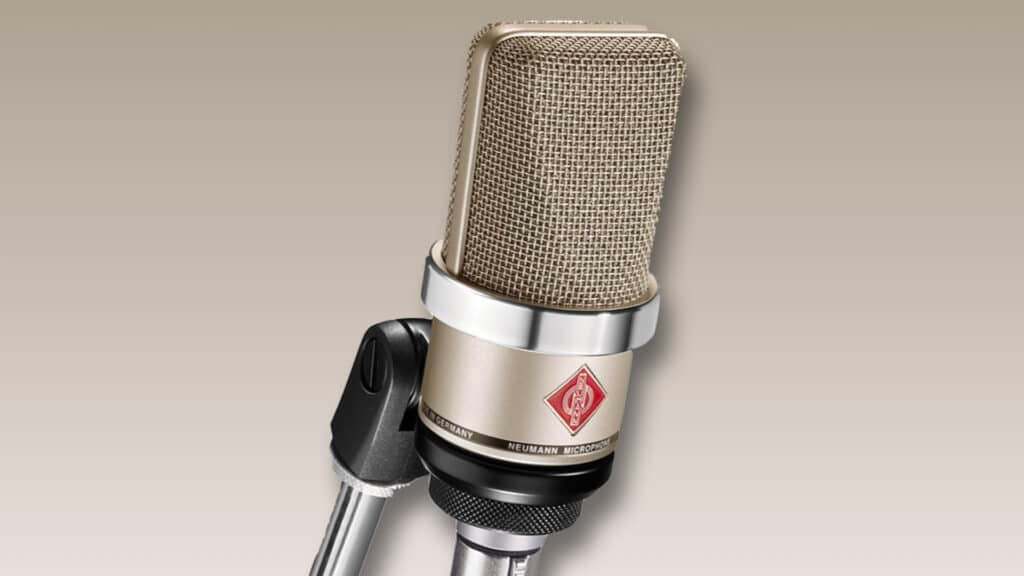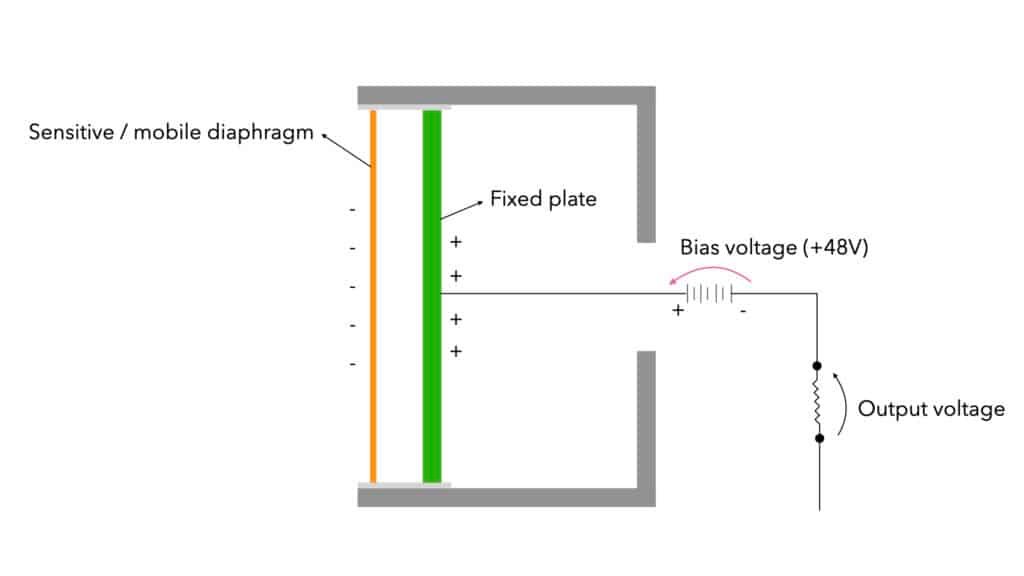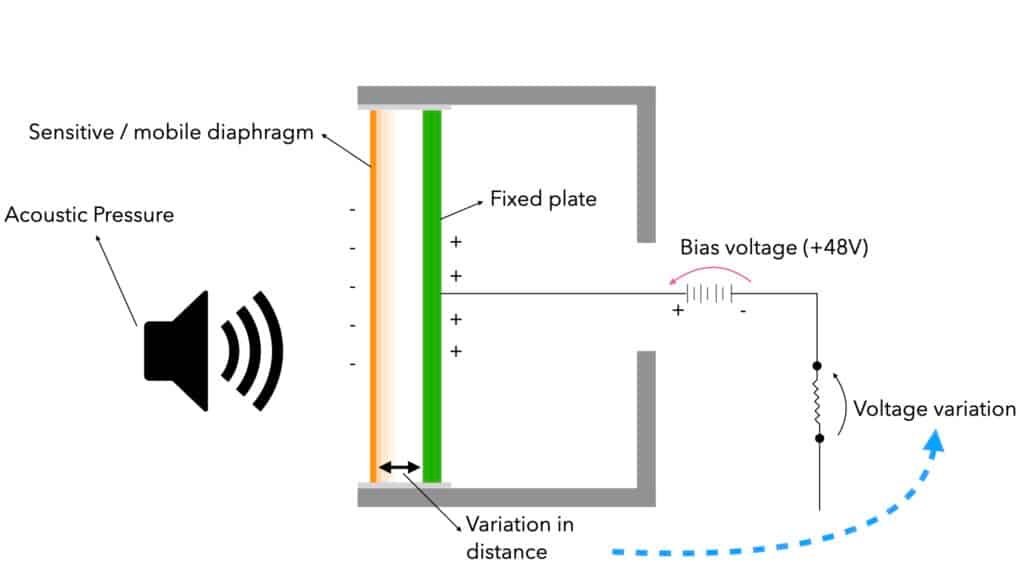“What is a condenser microphone ?”
This is a very important question to ask yourself if you want to improve your recording skills, especially if you want to record better vocals. But what is actually a condenser microphone ? How does it work ? In which situation should you use it ? Answer here!

A condenser mic is a microphone built for capturing and rendering brilliance, detail and warmth. It is made up of a sensitive diaphragm suspended by a fixed plate. Both of them are electrically charged, one positively, the other negatively. When the sensitive diaphragm moves, it produces a certain voltage. This is the principle of a condenser / capacitor.
How a condenser mic works
In the initial situation, a certain voltage (+48V) is applied to the condenser. The output voltage will remain zero as long as the movable electrode does not move. As soon as the sensitive diaphragm moves, under the pressure of an acoustic wave, it will produce a variation in distance between the two electrodes, and therefore a voltage variation. This voltage represents what we will hear in our headphones or our monitors.
Initial situation

Sound wave pressure

Applications
Condenser microphones are often preferred for studio applications. For two reasons :
- They are built to be used indoors, not outdoors. Condenser mics are extremely sensitive, which means that a simple gust of wind may create huge pops in your recordings. Humidity is also one of the biggest condenser mic’s ennemies.
- They are made to capture brilliance, details and high frequencies. This is exactly what we need for studio applications.
In studio, you can use a condenser mic…
- To record vocals. 95% of the time, using a condenser mic is the best way to capture all of the interesting frequency ranges in a voice. The reliability of this type of mic is unbeatable.
- To record your acoustic guitar. Details are important to capture when you record an acoustic guitar, a condenser mic is probably the best option!
- To record guitar amps. If you want to capture the sound of your amp as reliably as possible, use a condenser mic. But if you want to capture fatness, dirt and seed from the amp, a dynamic mic may be a better option
- To make room recordings. Room recording is an advanced recording technique, but you want to start trying new things in that field, you should start with a pair a condenser mics,…
- …
The applications are actually limitless. But before choosing your microphone, first think about what you’re looking for as a sound result. All microphones will record your vocals, your guitars or anything that requires a condenser mic, but it would be like choosing a truck over a motorcycle to get around town. You will arrive at your destination, but with difficulty.
If you have a relatively low budget but want to make sure you invest in good quality equipment, I suggest you look at the Röde NT1-A or the Audio Technica AT-2035.
On a limited budget, these are in my opinion the two best condenser microphones on the market today.
Need a professional sound engineer specializing in pop and hip-hop mixing ? Great! Take a look at our services and let’s blow up your career together!
Let’s start now!
Conclusion
You can think of the condenser mic as a very sensitive tool that use a moving diaphragm to record things with detail and precision. Knowing how they work is not that important, but knowing in what applications you can use them in has to be a priority for you.
After months and years of practice and learning, you might think of “breaking the rules” and using a condenser microphone for fairly rare applications. But for now, just try to learn how your condenser mic sounds with each source. Analyze dynamics, frequency range, sound color,… Training your ear is very important!
Related Articles:






